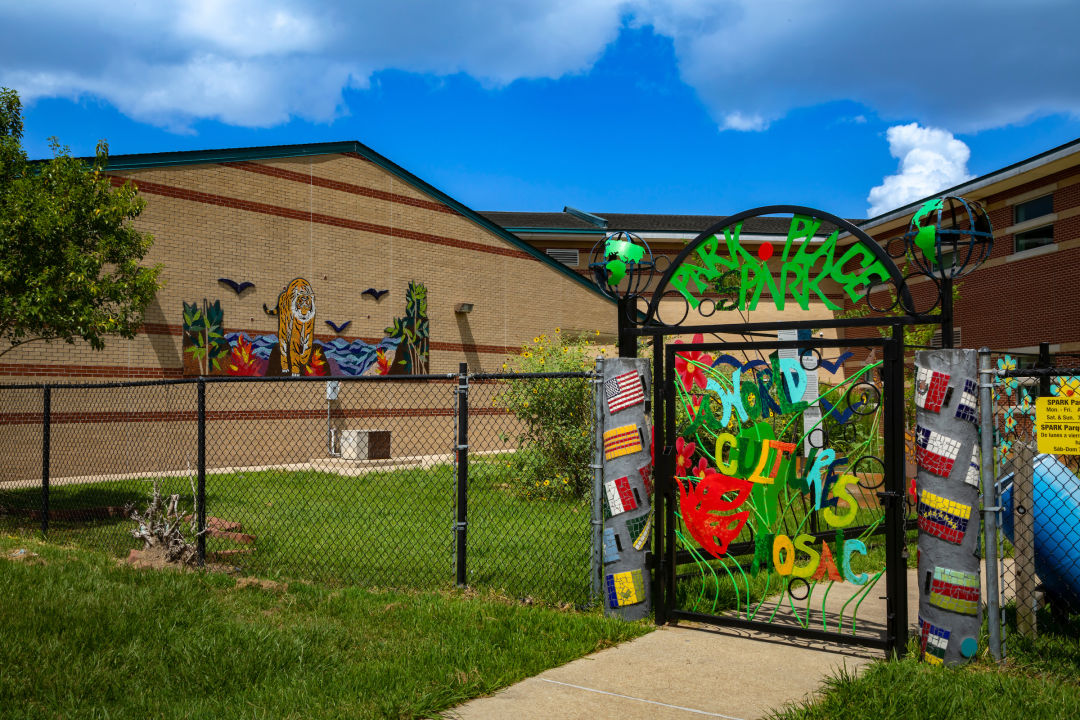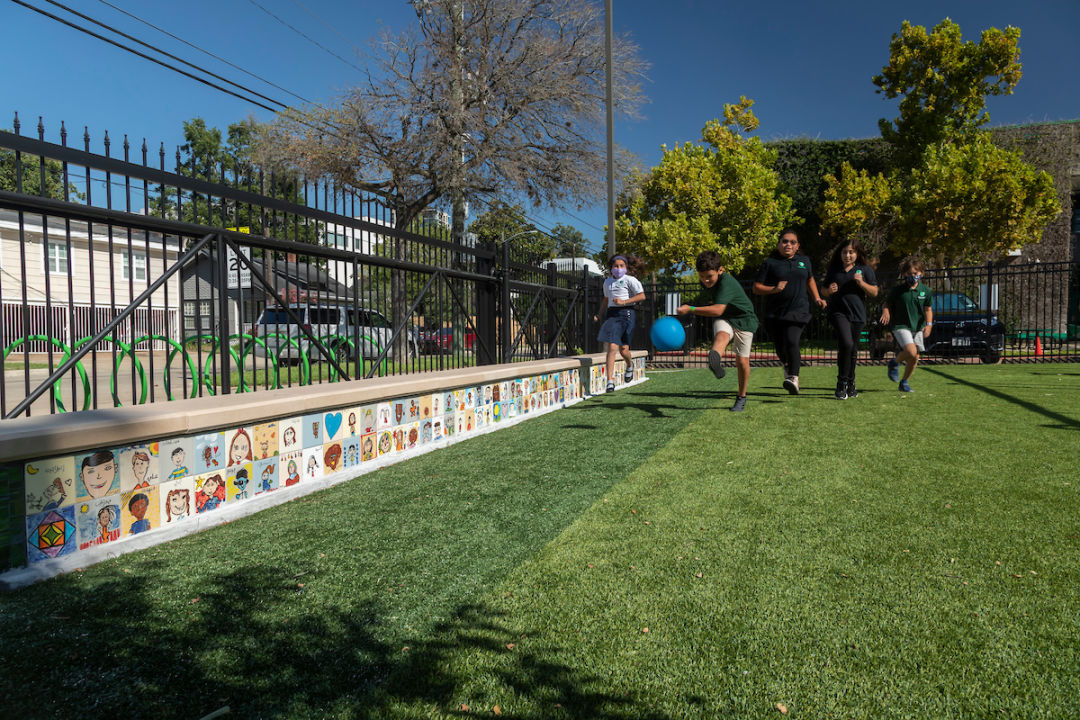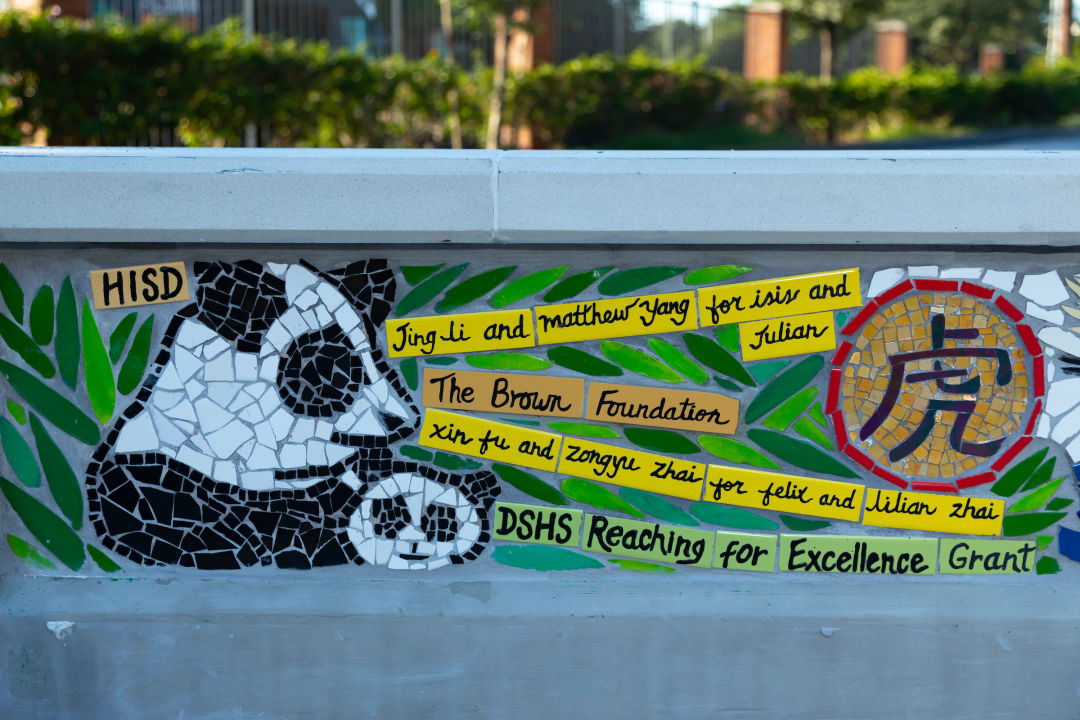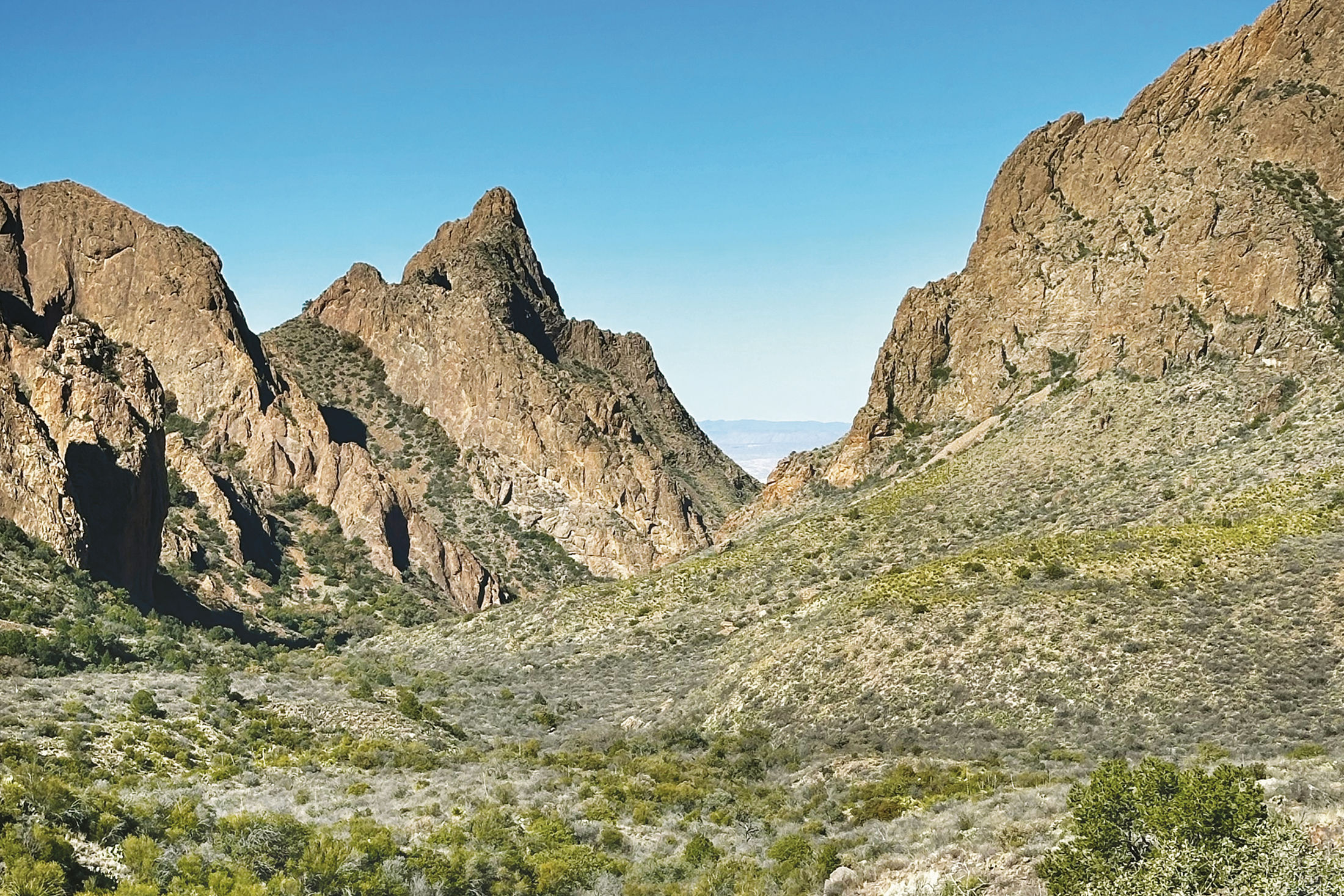SPARK Celebrates 40 Years at Play

Park Place Elementary School, with art by Rose Toro.
Image: Courtesy Tom Callins
The benefits of city parks are as vast as a freshly mowed field on a summer day. They range from encouraging a healthy lifestyle to creating jobs to curbing crime. So, in 1983, when a study found that Houston needed to develop at least 5,000 acres of parkland just to compare favorably with other places in the U.S., the city jumped into action.
That same year, the SPARK School Park Program was created, with a stated goal of expanding access to healthy recreational opportunities in the Houston area by developing and enhancing neighborhood parks on public school grounds.
Today SPARK has successfully built more than 200 community parks in 17 different school districts, working with public schools to transform their playgrounds into artful and multipurpose parks. Each park is uniquely designed, based on the ideas and needs of the school and surrounding neighborhoods that will use them.
“We’ve always been focused on park equity and helping those schools that need assistance in adding amenities to their playground,” executive director Kathleen Ownby tells Houstonia.

Kids play in the renovated park at Arabic Immersion Magnet School.
Image: Courtesy Tom Callins
SPARK believes that a zip code shouldn’t determine someone’s ability to find a place to exercise, play, or simply enjoy the outdoors. A major rule for determining a SPARK Park is that the school must be willing to be open to the public after school and on weekends and holidays. Another factor is that the school and community it serves are part of the planning and development process from beginning to end.
“We’ve done a really good job in involving the community in our projects,” Ownby said. “It wouldn’t work without them.”
The way it does work is that each school selected is given a goal of $5,000 to raise for their park. Penny drives, bake sales, school carnivals, candy sales, spaghetti dinners, “buy a brick” drives, rummage sales, and many other creative events are staged to generate the funds. Trees are donated by Trees for Houston; volunteers care for trees planted in the parks; local businesses help with in-kind contributions; and local architects, landscapers, and artists contribute their professional skills to all the parks under development.
Ownby, the daughter of late City of Houston council member and SPARK founder Eleanor Tinsley, has been with the program since 1988, and says one of her favorite parts is the art component, which kicked off in 1991.
“It’s very exciting for me to see how the Houston artists or art teachers from the schools come up with unique ways for the kids to be involved and showcase the park,” Ownby said. “We love that the kids get to leave their mark on the park.”
More than 100 artists and art teachers have participated in making each park unique, including longtime SPARK artist Rose Toro, who’s worked on more than 50 SPARK Parks over a 23-year span.

Toro was able to build a beautiful mosaic seat wall called “The Wonders of China.”
Image: Courtesy Tom Callins
“I create art with the community for the community,” Toro said. “I love it! It has added a lot of green areas to the city of Houston and other school districts, and we get to focus on places that don’t have parks or access to greenspaces in their neighborhoods.”
One of the most memorable projects in recent years is the Arabic Immersion Magnet School, which took over the Kinder High School for Performing and Visual Arts building in Montrose. Another is the Mandarin Immersion Magnet School, for which Toro was able to build a beautiful mosaic seat wall called “The Wonders of China,” which features a dragon and phoenix (the school’s mascots), plus pandas, cherry blossoms, zodiac signs, and more, using the students’ ideas and creations.
“The kids love participating and creating the art, and I love supporting public art,” said Toro. “It’s very important. They take ownership and pride in the work that they do, and there’s never any vandalism because the kids are part of the project, which in turn enriches the community.”
SPARK currently works with 16 school districts and three charter schools in the Greater Houston area, and to date there are 157 fully redesigned and upgraded parks. After a 10-year period of time (the length of the SPARK agreement), a park is eligible for a “re-spark,” and some HISD parks have been re-sparked at least two to three times to address normal wear and tear.
“When the community has some skin in the game, it feels as though the students bought the park, and in return there’s less vandalism and the park is used more,” Ownby said. “We very seldom experience the defacing of art projects.”
After 2019’s phase one was completed (25 new school parks and five re-spark parks), another phase is now finishing up, bringing 15 new parks and 15 re-sparks as of May 2023. The next phase for SPARK is currently underway, with the hope of creating 40 new parks in the next four years, and raising $10 million dollars to complete.
To donate or learn more about the SPARK School Park Program, visit sparkpark.org.
Green Wishing
The efforts SPARK has made to upgrade Houston parks are considerable, but the city still has a lot of work to do. Every year the Trust for Public Land (TPL) group publishes a report using a ParkScore index, which compares park systems from the 100 most populated cities in the US. As of 2022, Houston ranks 70th in greenspace access. The report notes that 60 percent of Houston’s 2.3 million residents live within 10 minutes of a park. Through its collaboration with Houston Endowment, the Kinder Foundation, and others, SPARK seeks to boost that number to 75 percent by 2040.




